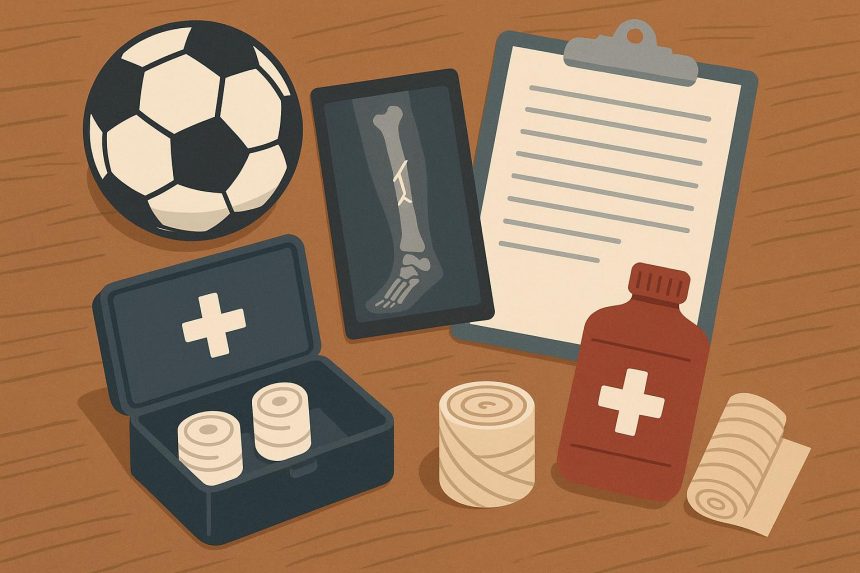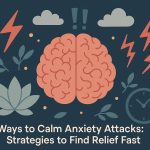Columbus, Ohio, is a city where family life thrives; weekends with soccer tournaments, afternoons at the Columbus Zoo, and bike rides along the Olentangy Trail. Parents work hard to keep their children safe, yet accidents can strike at any moment and create panic and uncertainty. When a child suffers an injury, the situation feels especially heavy because kids are vulnerable and often unable to communicate exactly what they are feeling.
In those first moments, parents must think quickly, checking for danger, offering comfort, and deciding whether emergency medical care is needed. Beyond the immediate response, it becomes important to document details such as when and how the incident occurred, since this information can help doctors and legal professionals if needed. While physical injuries require urgent attention, you should not overlook emotional distress, as children may carry fears long after the event. In negligence cases, a Columbus baby and child injury lawyer can help protect your child’s rights and future.
Immediate Response
Your first response after an accident is critical. Check the situation and see if it’s safe to approach your child. Search for any threats in your surroundings, such as vehicles or toxic substances. If it is safe to approach your child, move closer and check to see how they are doing.
Assessing the Injury
Look for bleeding, swelling, or obvious deformity. If the child is conscious, listen to them to determine the extent of their injuries. Call emergency services immediately if the situation is severe or the child does not awaken.
Providing First Aid
If you are trained in first aid, continue while awaiting help. For minor cuts or bruises, gently clean and bandage the area with water. Keep the affected area still for sprains or suspected fractures to avoid additional injury. Keep the child as calm and comfortable as you can.
Seeking Medical Attention
It is best to see a doctor if the injuries are deemed minor. Other injuries may not be readily visible and can become complications later. A doctor can conduct complete examinations and recommend medical treatment and observation.
Gathering Information
Following an accident, it is vital to collect evidence. Record the time, location, and cause of the incident. Request contact information for witnesses, if any. This information aids physicians and may even help in drafting legal action down the line.
Legal Considerations
Legal representation may be necessary depending on the type of accident. If the incident occurred because of negligence or defective equipment, you should consult a lawyer as soon as possible to discuss potential claims. Be sure to document your medical expenses, treatments, and any other related costs.
Communicating with the Child
An accident can leave children frightened or puzzled. Ensure to speak to them and comfort them. Do your best to explain what is happening and what will happen next in language they can understand. Let them discuss their feelings and whatever is worrying them.
Monitoring for Symptoms
Keep an eye on them for changes in condition after the accident. Look for signs of a head injury, such as a headache, dizziness, and stomach sickness. Seek medical help as soon as possible if any new symptoms develop.
Emotional Support
A disaster may prove strenuous for a child. Treating emotional injuries is just as important as treating physical injuries. Just take time to hear out their fears or insecurities. Consider professional care if the child shows signs of continuous distress.
Educating for Prevention
While you handle immediate concerns, how can you help your child avoid future accidents? Teach the child about safety measures based on the situation. Whether it is road safety, playing safely, or using equipment, educating them can help lower the chances of any such incident.
Involving the Community
Exchange stories and safety advice with other parents or guardians. Promoting a safety culture may improve accident and child protection practices.
Conclusion
If your child has received injuries in an accident, you must know how to act calmly and with the right sensibility. The immediate safety of the child, basic first aid, and medical attention come first. Moreover, the second step is to learn from their experience and fulfill their emotional needs, which will help them feel more prepared the next time. Parents and caregivers can better protect the children they care for if they are informed and ready to take action.
Lynn Martelli is an editor at Readability. She received her MFA in Creative Writing from Antioch University and has worked as an editor for over 10 years. Lynn has edited a wide variety of books, including fiction, non-fiction, memoirs, and more. In her free time, Lynn enjoys reading, writing, and spending time with her family and friends.















